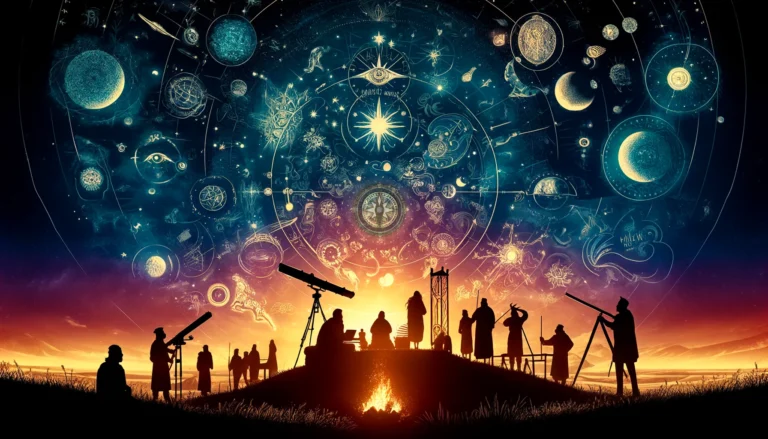Stars of Our Ancestors: A Glimpse into the Night Sky of the Past
For at least two million years, hominids and hominins have been looking up at the night sky pondering the stars. The Sun is most prominent, and dances with the moon. Then there’s the five planets that move in patterns throughout the night sky. At times, a few of them visible during the day. At night, the stars show up as a backdrop to the night sky. Sometimes, these stars fall. Falling stars show up best at night, but sometimes showup during the day. Before the telescope, before modern knowledge that was how are ancestors saw the universe.
The following paints a picture of life before the advent of the telescope in 1600, before our modern knowledge. It captures our ancestors’ understanding of the cosmos as a blend of observation, mythology, and philosophy.
The Sun
The Sun, an overwhelmingly dominant force in the sky, was revered across various cultures as a deity or a crucial celestial being. For ancient civilizations, the Sun was not just a life-giving star but the very embodiment of divine power and the regulator of life.
For over 2 million years, our resourceful and observant humanoid ancestors gazed up at the sky in wonder, tracing the path of the Sun as it rose and set each day. They noticed the moon, too, sometimes visible during the day, a pale companion to the Sun’s fiery brilliance.

Much later, as agriculture developed about 10,000 years ago, the Sun’s cycles became crucial for planting and harvesting, and its worship became more widespread. The ancient Egyptians, for example, revered the Sun god Ra, who traveled through the sky each day in his solar barge. The Greeks, too, honored Helios, the Sun god, who rode his chariot across the sky.
As civilizations rose and fell, the Sun remained a constant, its beauty and power inspiring art, literature, and science. The ancient Greeks made some of the first systematic observations of the Sun, noting its solstices and equinoxes.
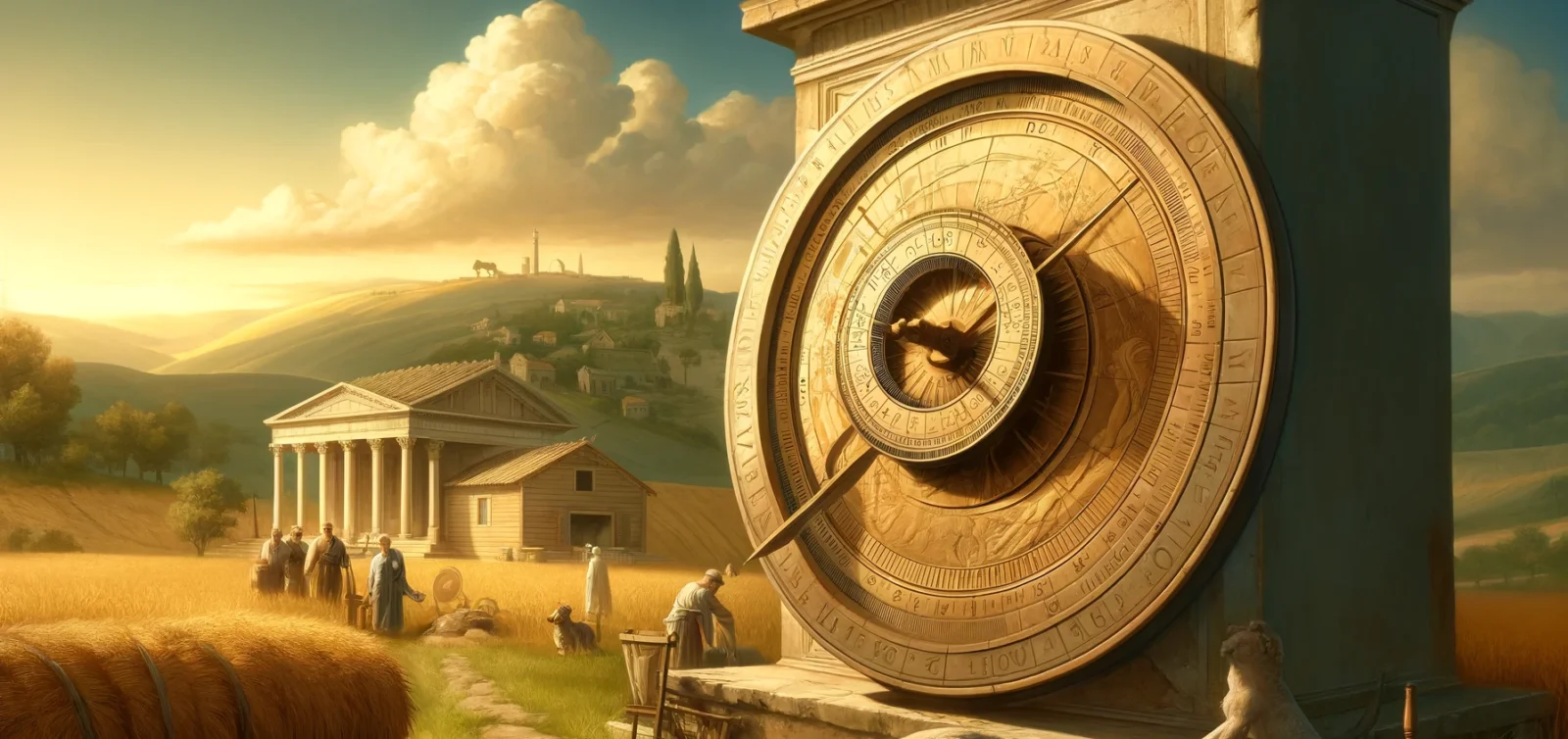
The Romans, too, studied the Sun’s movements, using their knowledge to build elaborate sundials and calendars. And yet, despite this growing understanding, the Sun remained a mysterious and awe-inspiring presence, its true nature still unknown. It wasn’t until the invention of the telescope in 1608 that humans would finally begin to uncover the Sun’s secrets, and our understanding of the universe would forever be changed.
As the Enlightenment dawned, America’s Founding Fathers, well-versed in the scientific literature of their day, witnessed a profound shift in our understanding of the Sun. Once revered as a singular deity or celestial monarch, the Sun was gradually revealed to be just one of many stars in the vast expanse of the universe. This transformation was sparked by the likes of Copernicus, Galileo, and Newton, whose groundbreaking discoveries demoted the Sun from its central throne and repositioned it as a mere star among countless others. As the Fathers of our nation pored over the works of these scientific pioneers, they came to grasp the humbling truth that our Sun was but a tiny, albeit vital, part of a grand cosmic tapestry, and that the universe was far more vast and mysterious than previously imagined.

Weekly Wisdom Builder
Got 4 minutes a week?
A new 4-minute thought-provoking session lands here every Sunday at 3PM, emailed on Mondays, and shared throughout the week.
Exactly what the world needs RIGHT NOW!
The Moon
To our ancestors, the moon appeared smooth, like a billiard ball. The dark and light patches were merely subtle variations in its luminous glow, devoid of the intricate details and textures that we now know exist on the lunar surface. That’s the world our ancestors lived in until the invention of the telescope in 1608. That’s when the shocking news that the moon has mountains, and the planets have moons, shook the world.
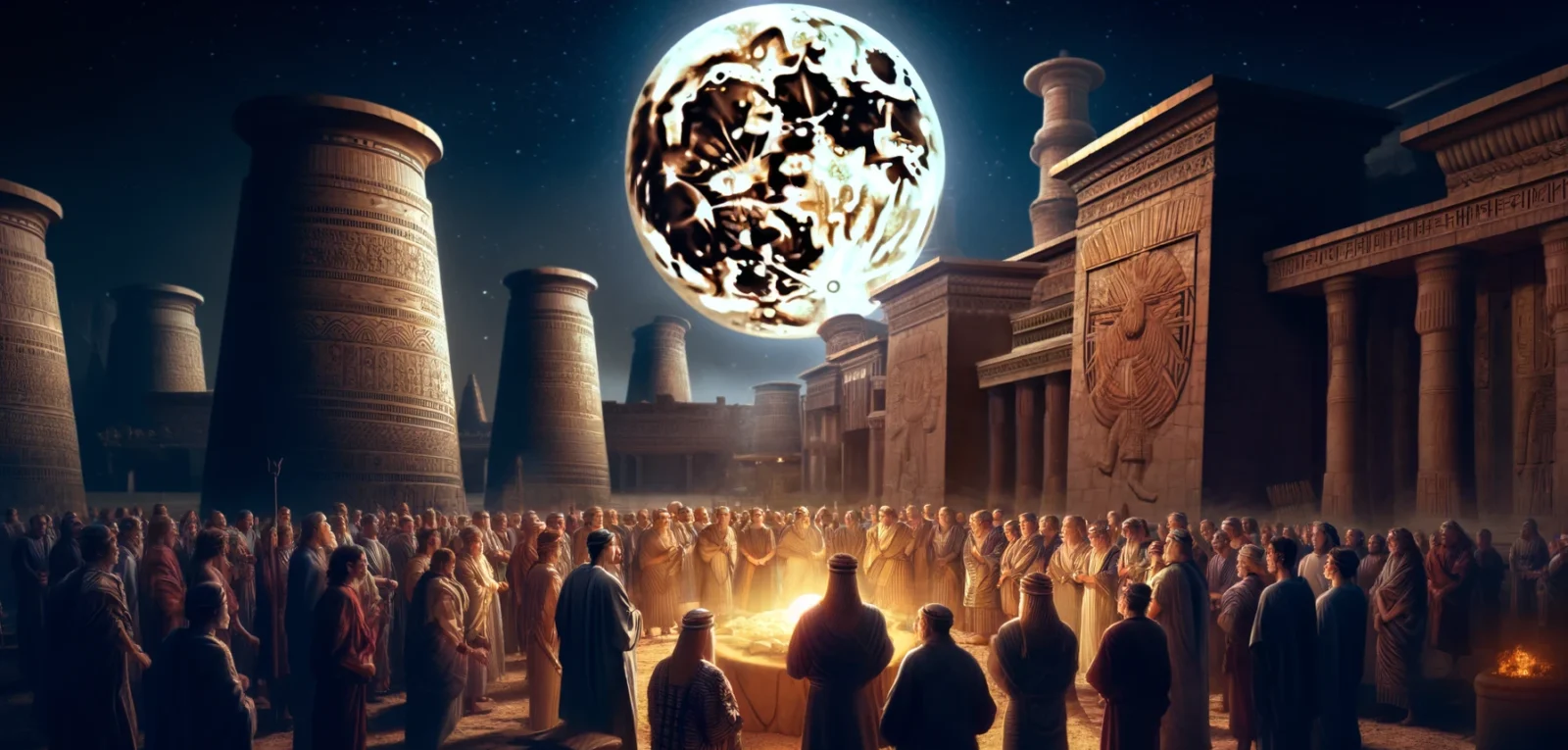
The Planets
Roughly 50,000 years ago, around a crackling fire, flickering light danced upon the faces of our ancestors, their minds ablaze with wonder and curiosity. These are the first witnesses to the cognitive revolution that marked the birth of modern thought. As the flames cast long shadows, their gaze often turned upwards, towards the vast tapestry of stars that adorned the night sky.
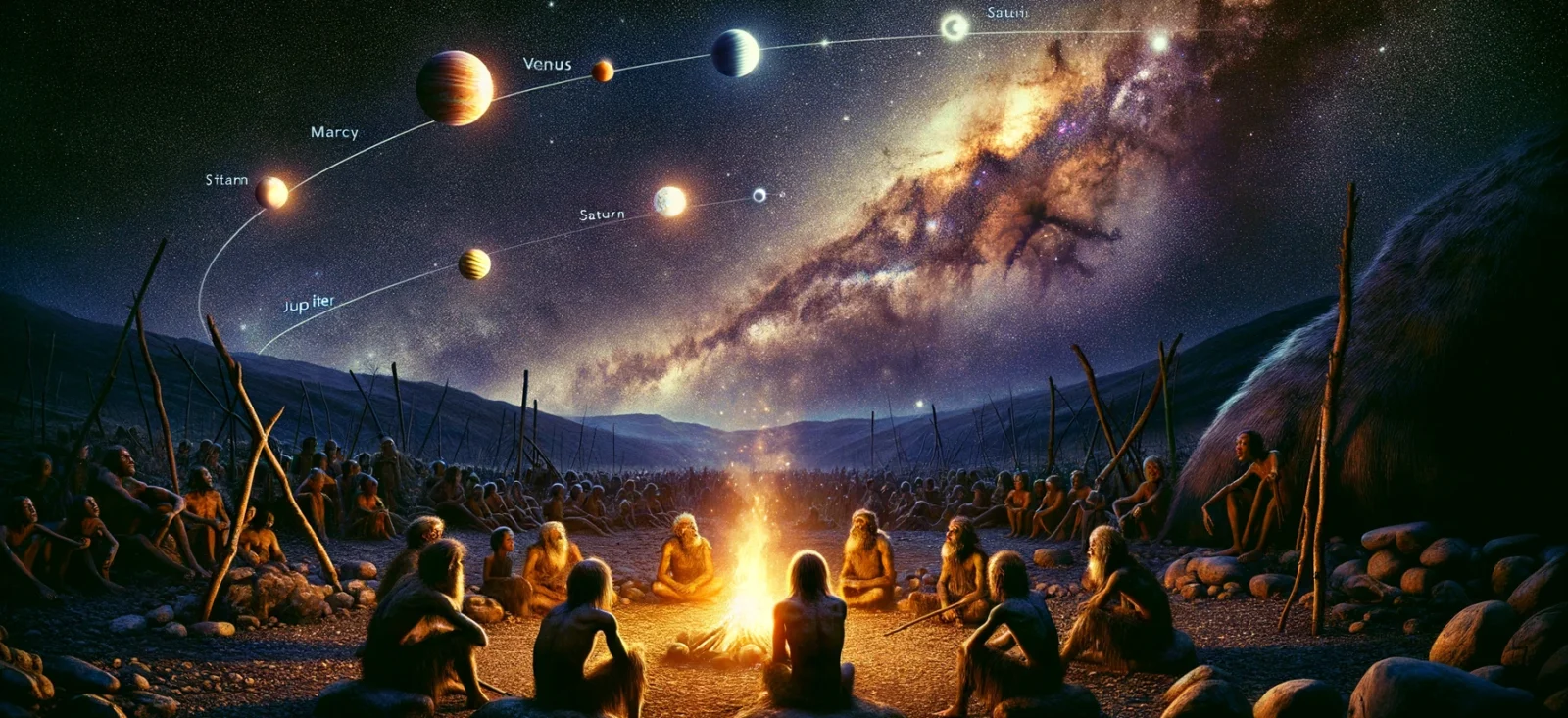
Among the stars were five mysterious moving stars. To our early human ancestors, these moving stars were enigmatic, yet consistent. Our ancestors could rely on their patterns even if it was difficult for them to figure it out. These “wandering stars,” as they were likely first perceived, are what we now recognize as the planets – Mercury, Venus, Mars, Saturn, and Jupiter. Over time, various specific people recognized their patterns and told others. For millennia, these stories were forged in many places throughout Africa, the Middle East, Europe, and Asia, only to be forgotten over time. Then rediscovered and forgotten again.
Over countless generations, these observations were passed down, woven into stories and myths. Some cultures saw the planets as celestial deities embarking on celestial journeys. Others envisioned them as omens, their movements portending good or bad fortune. As language developed, names were assigned to these enigmatic objects, reflecting their observed characteristics. The brilliance of Venus, for instance, might have earned it a connection to a fertility goddess, while the reddish hue of Mars could have been associated with war or conflict. Despite the fantastical interpretations, the underlying fascination with these “wandering stars” remained, laying the groundwork for future generations to build upon.
As centuries passed and civilizations like the Babylonians and Greeks rose, these mysterious wanderers—now understood as planets—were studied with increasing sophistication. Astronomers began to chart their courses, finding that these celestial wanderers moved in predictable loops across the sky, unlike the steady march of the stars. The patterns of these planets became a source of deep fascination and were integrated into the fabric of various cultures as symbols of gods and powers that ruled over their destinies. Observations and records improved over millennia, as did interpretations of what these bodies represented, influencing navigation, agriculture, and religious practices.
By the time of the Renaissance, the accumulation of astronomical knowledge and the refinement of observational tools allowed figures like Copernicus, Galileo, and Kepler to make groundbreaking advances in understanding the solar system’s structure. The movements of these planets, once cryptic and divine, were now explained through the lens of heliocentric theory, revealing that Earth and its celestial neighbors orbited the Sun. This shift not only changed the way humanity viewed itself in the grand scheme of the cosmos but also set the stage for modern astronomy, transforming the mysterious moving stars into well-understood planets whose positions and movements could be predicted with mathematical precision.
Shooting Stars
In the darkness of prehistory, our ancestors gazed up at the night sky, the streak of light we know as a shooting star has ignited the imaginations of people across the globe. In prehistoric times, under the vast, star-lit skies, our ancestors would have witnessed these sudden flashes frequently with fear. Their imaginations telling them these are messages from above. Mixed in with local lore, fear or good fortune might be mixed in with their interpretations. When one of them was right a few times, they became a spiritual leader or seer or an oracle. These prophets with their newfound power would use these events to persuade and manipulate.
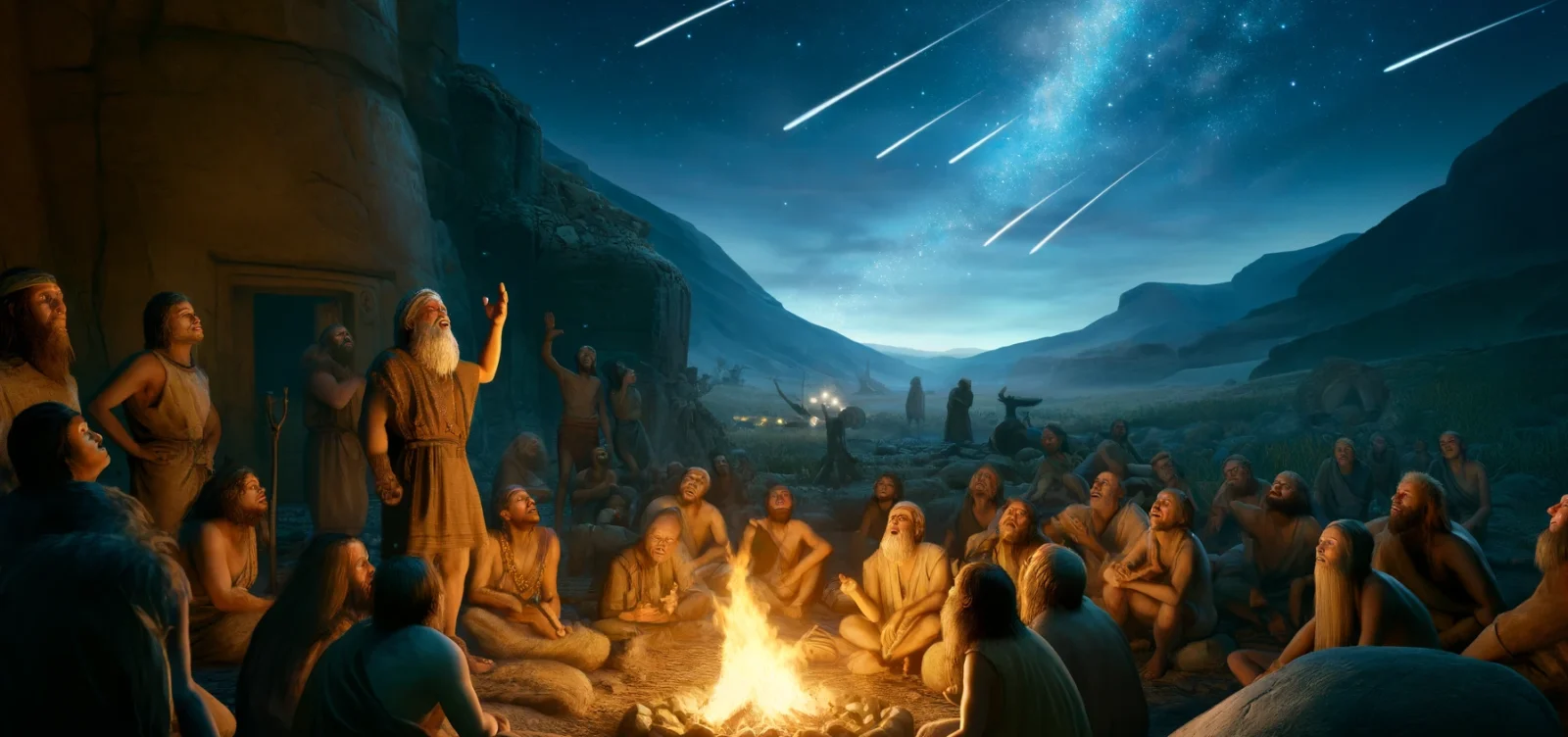
They called them “shooting stars,” believing them to be omens from the gods, harbingers of good fortune or bad. These brief, brilliant apparitions left behind no lasting trace, yet their impact on the human imagination was profound. Ancient cultures wove myths and legends around these celestial events, often linking them to the spirits of the dead or the whims of the divine.
By the time of ancient civilizations like the Greeks and Romans, shooting stars had woven themselves into the fabric of mythology and astrology. Ancient astronomers, lacking telescopes, recognized them as atmospheric phenomena, but the true nature of their origins remained elusive. The Greeks, known for their efforts to marry the mystical with the rational, considered them as falling stars, possibly the souls of new heroes or the tears of gods. Aristotle himself posited that shooting stars were caused by “dry exhalations” from the Earth interacting with fiery exhalations from the sky. Meanwhile, the Romans held festivals such as the Navigium Isidis, where shooting stars were interpreted as signs from Isis, guiding sailors and ensuring their voyages. This blend of wonder, myth, and the burgeoning desire to understand their natural world laid the groundwork for the later scientific explorations that would redefine shooting stars not as mystical phenomena but as meteors burning brilliantly as they entered Earth’s atmosphere.
The Stars
Of the approximately 200 billion stars of the Milky Way, only about 10,000 are visible with the naked eye. From any location on Earth, on a good night, you can usually count about 2,500 of them, on a great night, up to about 5,000. That means, before the telescope was invented around 1600, people counted the stars. Our best catalogs up to that point had only about 10,000 stars in them.
The North Star
While the closest star is Proxima Centauri (about 4.2 light years away) and the brightest star in our night sky is Sirius (around 8.6 light years away), navigating by the stars has played a crucial role in human history. One of the most important navigational tools is the North Star, also known as Polaris.
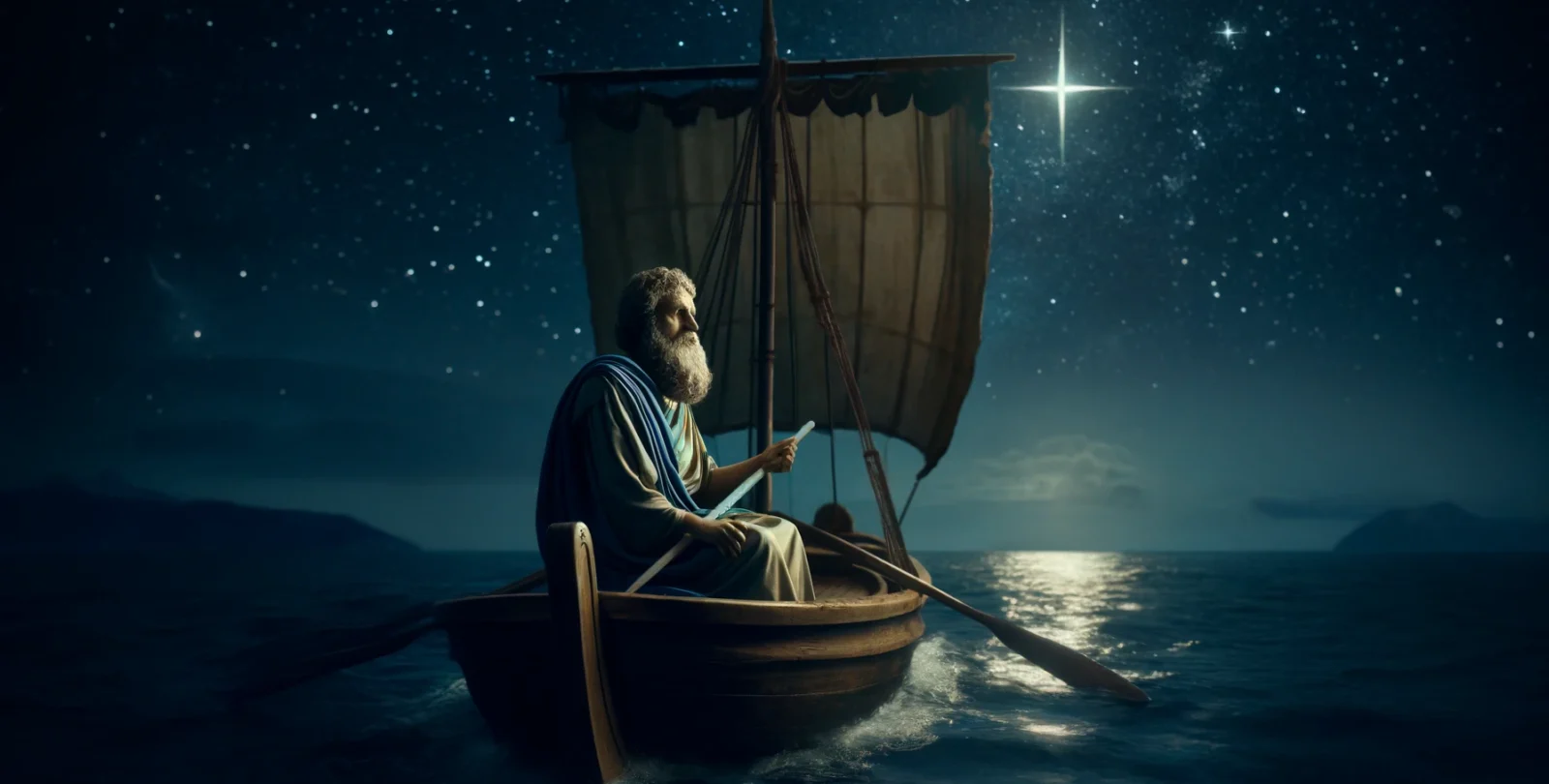
Across cultures, the North Star has held a special place in mythology. In ancient Greece, it was associated with the goddess Ursa Minor, the Little Bear. The story goes that Zeus, king of the gods, placed her amongst the constellations to forever mourn her son, Arcas, who was transformed into a bear.
However, the significance of the North Star goes beyond mythology.
The Earth’s Wobble and the North Star’s Shift
Our Earth doesn’t spin perfectly upright. It wobbles on its axis, similar to a spinning top that starts to lose momentum. This wobble, called axial precession, takes about 26,000 years to complete a cycle. Because of this wobble, the apparent location of the North Star changes over time.
Interestingly, 13,000 years ago, a different star, Thuban in the constellation Draco, held the title of North Star. In another 13,000 years, Vega, the bright star in the constellation Lyra, will take its turn. This means our ancestors 26,000 years ago, around 24,000 BCE, used the star Thuban in the constellation Draco to navigate the globe.
Modern Understanding
Sprinkled with these stars, a few celestial objects that twinkle like stars are, in fact, not stars at all. They are entire galaxies, far beyond our own Milky Way. To the naked eye, however, most people can see only about three. Of course, in modern times, we have to contend with light and pollution, but where you are on Earth has always mattered. In good conditions, these galaxies appear as mere specks of light, indistinguishable from the stars surrounding them. Among these, most can see the Andromeda Galaxy just over 2.5 million light years away, our closest spiral galaxy, and the Large and Small Magellanic Clouds, which are satellite galaxies of the Milky Way. That’s normally about it. A few humans with extraordinary eyesight on a super clear and dark night might be able to see a couple more, such as the Triangulum Galaxy (M33), which is just over 2.5 million light years away. All these are part of our Local Group of galaxies. Our Local Group of galaxies, gas clouds, and dust are gravitationally bound to each other.
Of the objects outside our Local Group, very few objects are visible to the naked eye. Under exceptional viewing conditions, some of the brighter members of the Virgo Cluster might be barely perceptible to the keenest of human eyes as faint smudges.
The Future of the Night Sky
While stars will come and go, and galaxies within our Local Group might pass through each other, the night sky for all descendant beings of the Milky Way will be something like what you see in the night sky each night. And, this isn’t speculation, it’s a verified theory: the Lamda Cold Dark Matter (λCDM). According to what scientists see, the night sky will essentially look like it looks like now, maybe even forever.
Now, if you’re starting to wonder about the expanding universe, that was the point of phrasing this answer this way. Perhaps you’ve heard horror stories about the final death of the stars. In the past, theoretical physicists were pondering the far distant fate of the universe. The common debate centered on whether it will expand forever or collapse. If it expanded forever, the common thought was the universe would end in a cold dark abyss, void of all life: the Big Freeze. This idea brought on an existential dread for thinking people everywhere! Our only hope was the frequently added, “but we don’t really know.” Now we know. All observations support the Lambda model, and while a few other theories have not been fully ruled out, current understanding is that the expansion will never overcome local gravity. That not only means that all the stars in the Milky Way will stick together, but so will all 54 galaxies of our Local Group. To be clear, the universe is a self-reconfiguring machine, so while it will be “like” it is now, the processes we see will continue. While it’s true that our Sun will burn out in about 5 billion years, its matter will be recycled one way or another.
This means, for all eternity, the mass of the Local Group is gravitationally bound. While we don’t know the lifespan of our Milky Way galaxy, current theories predict the Milky Way galaxy will continue for much longer than the lifespan of our Sun, which is about 5 billion years from now. The lifespan of the Milky Way galaxy and the 54 galaxies of our Local Group is likely into the trillions of years. This also means that for nearly an eternity, the night sky will be lit up with these stars, or their replacements, and these galaxies. Think about that, the night sky you look at will essentially be the same for all descendants throughout the Milky Way galaxy, for nearly forever.
Now, to frame time a bit, remember, time is not a ticking clock. It’s how we perceive the moving of objects in spacetime. And the numbers mentioned here are practically eternity to our reality. Here is one of my favorite paragraphs from my “30 Philosophers” book. I used it to frame time.
“We know about King Shuruppak from the Sumerian King List, an ancient text where he appears as the last king before a great flood. Although the list mixes historical kings with mythical figures, it places him at about 2600 BCE. That’s a long time ago, indeed—ancient history. Since this is our starting point, let’s try to put that into perspective. First, let’s frame 2,300 years. To put it into perspective, think about a decade of your life. It can feel endless, yet it does come and go. A century is more than a lifetime. A millennium? That’s nearly unfathomable. Second, think about the towering figures of Plato and Aristotle and consider that they lived in ancient times about 2,300 years ago.”
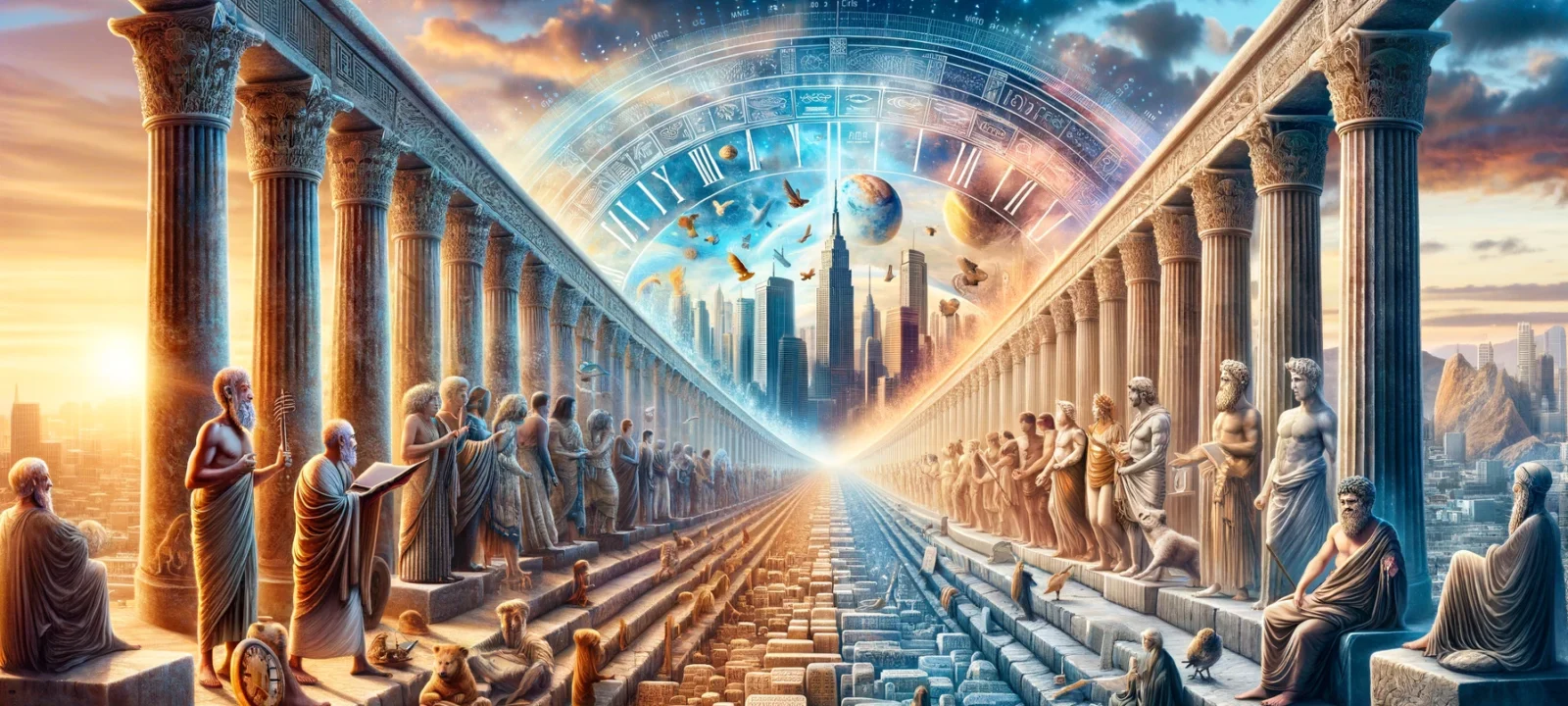
The book passage continues:
“From their time of about 350 BCE, we are only halfway to the starting point of our journey. For Plato and Aristotle, Shuruppak was someone from ancient times. Once we step back another 2,300 years to 2600 BCE, amidst the sands of time, we find King Shuruppak. From our time, he is a figure from five millennia ago. He is deeply rooted in his ancient saga, and to him, the beginning of his Sumerian civilization was ancient times, as it had already been thriving for at least another 2,300 years.”
To See More, Buy Binoculars
To wrap up this exploration, let’s talk briefly about what’s needed to view the 54 galaxies of our Local Group. Observing the more prominent members, like the Andromeda Galaxy and the Magellanic Clouds, can be done with the naked eye under dark skies. Medium-sized binoculars, such as 10×50, expand your view to include the Triangulum Galaxy and brighter dwarf galaxies.
Small telescopes with apertures around 4 inches (100mm) start to reveal many of the dwarf galaxies, albeit as faint objects. For a more comprehensive observation, including the faintest members of the Local Group, larger amateur telescopes with apertures of 8 to 16 inches (200mm to 400mm) are necessary, though these galaxies will still appear as dim smudges. Fully cataloging all 54 galaxies, especially discerning details in the faintest dwarfs, requires very large amateur or professional-grade telescopes with apertures of 20 inches (500mm) or more, equipped with advanced imaging technology and situated in locations with optimal viewing conditions.
To view some of the larger objects outside our Local Group, such as galaxies within the Virgo Cluster or the Andromeda Galaxy’s companions that lie just beyond the Local Group’s boundaries, more powerful observational tools are required. While the brighter galaxies just outside the Local Group may be glimpsed with large amateur telescopes—those with apertures of 10 inches (250mm) or more—truly exploring the vast array of extragalactic objects demands even greater capabilities. Professional-grade telescopes, often with apertures exceeding 20 inches (500mm), equipped with sophisticated imaging technologies, are necessary to capture the fainter galaxies, nebulae, and clusters that reside in these more distant regions of space. Observatories utilizing adaptive optics or located in space, free from Earth’s atmospheric distortions, open up a universe of deep-sky objects far beyond what amateur equipment can reveal. For the amateur astronomer, however, advanced CCD cameras attached to their telescopes can enhance faint object detection, allowing for the exploration of extragalactic wonders well outside our Local Group, albeit in less detail than professional instruments would permit.
— map / TST —
Further Reading:
- The Expanding Universe Explained – Learn about the intricate intertwining of our ideas on the expanding universe.


